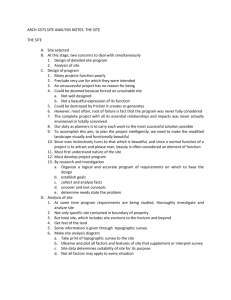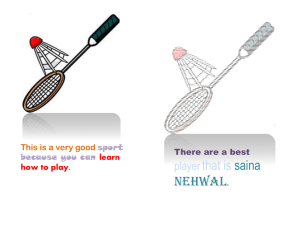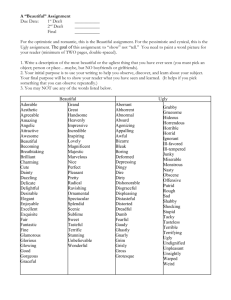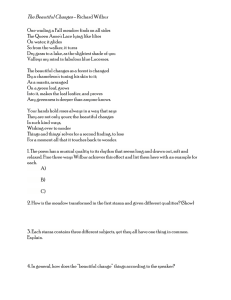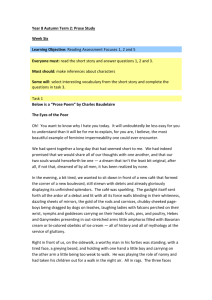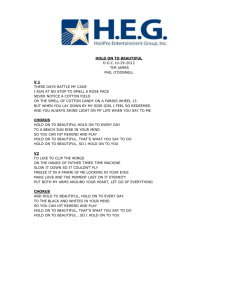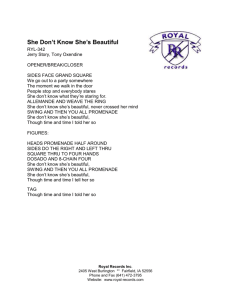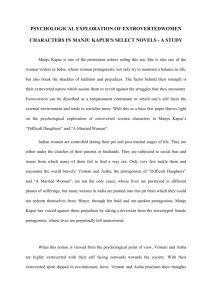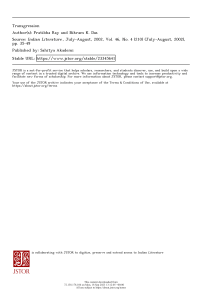Nectar in a Sieve chapters 1-2
advertisement
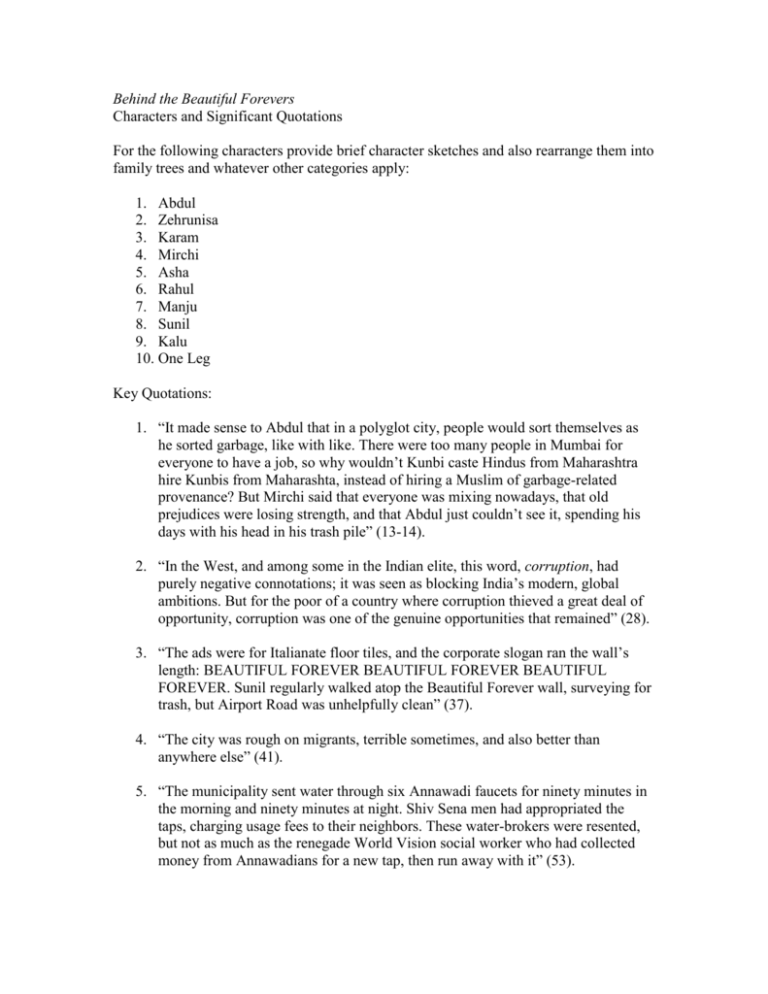
Behind the Beautiful Forevers Characters and Significant Quotations For the following characters provide brief character sketches and also rearrange them into family trees and whatever other categories apply: 1. Abdul 2. Zehrunisa 3. Karam 4. Mirchi 5. Asha 6. Rahul 7. Manju 8. Sunil 9. Kalu 10. One Leg Key Quotations: 1. “It made sense to Abdul that in a polyglot city, people would sort themselves as he sorted garbage, like with like. There were too many people in Mumbai for everyone to have a job, so why wouldn’t Kunbi caste Hindus from Maharashtra hire Kunbis from Maharashta, instead of hiring a Muslim of garbage-related provenance? But Mirchi said that everyone was mixing nowadays, that old prejudices were losing strength, and that Abdul just couldn’t see it, spending his days with his head in his trash pile” (13-14). 2. “In the West, and among some in the Indian elite, this word, corruption, had purely negative connotations; it was seen as blocking India’s modern, global ambitions. But for the poor of a country where corruption thieved a great deal of opportunity, corruption was one of the genuine opportunities that remained” (28). 3. “The ads were for Italianate floor tiles, and the corporate slogan ran the wall’s length: BEAUTIFUL FOREVER BEAUTIFUL FOREVER BEAUTIFUL FOREVER. Sunil regularly walked atop the Beautiful Forever wall, surveying for trash, but Airport Road was unhelpfully clean” (37). 4. “The city was rough on migrants, terrible sometimes, and also better than anywhere else” (41). 5. “The municipality sent water through six Annawadi faucets for ninety minutes in the morning and ninety minutes at night. Shiv Sena men had appropriated the taps, charging usage fees to their neighbors. These water-brokers were resented, but not as much as the renegade World Vision social worker who had collected money from Annawadians for a new tap, then run away with it” (53). 6. “Manju wanted to be a teacher when she finished college, and her great fear was that, in a fit of pique, her mother would wed her to a village boy who didn’t think that a woman should work. That she’d die doing the things she was doing now; sweeping the dirt that had blown in from outside, mopping, then sweeping the new dirt that had blown in while she mopped” (61). 7. “As every slumdweller knew, there were three main ways out of poverty: finding an entrepreneurial niche, as the Husains had found in garbage; politics and corruption, in which Asha placed her hopes; and education” (62). 8. “She (Meena) was a Dalit (once termed untouchable); Manju belonged to the Kunbi farming caste, a backward caste but higher. Like most young Annawadians, the girls considered the caste obsession of their elders to be an irrelevant artifact. Manju and Meena had become friends because they both loved to dance, and stayed friends because they could keep each other’s secrets” (66).

